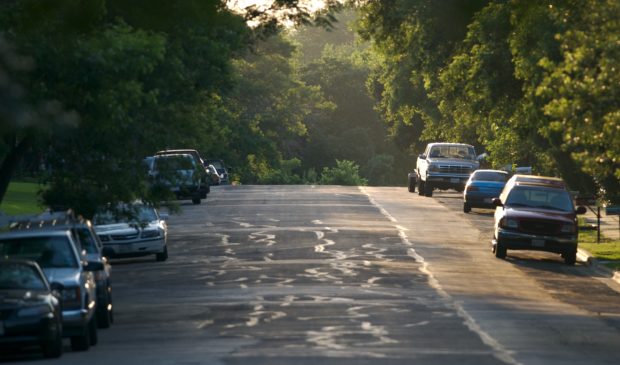Planning Commission weighs in on mobility plan updates
Tuesday, March 22, 2022 by
Jonathan Lee As the city works to update the Austin Strategic Mobility Plan, a 20-year transportation plan adopted in 2019, the Planning Commission was the latest body to comment on the proposed changes March 8.
City staffers propose two sets of changes to the ASMP. First, they plan to add language emphasizing the need for a transportation system that is more resilient to natural disasters in the wake of Winter Storm Uri. Second, they hope to update the street network section of the plan, which details the ideal width of every street in the city, to align with other recent efforts such as Project Connect and updates to the city’s Transportation Criteria Manual.
The latter set of changes has stirred controversy, particularly among single-family homeowners. As the Austin Monitor reported last week, the city is proposing to upgrade designations of some small, local streets – called Level 1 streets in the ASMP – to Level 2 streets, a category that calls for wider right of way to accommodate protected bike lanes, sidewalks and street trees. This led some homeowners to believe that the city was planning to commandeer their front yards to build bike lanes.
Cole Kitten, division manager with the Transportation Department, clarified that this was never the case. “While updates to the street network and the TCM list an expanded right of way for many streets, it does not mean changes are imminent,” Kitten said. He added that only new, large developments must adhere to the right of way outlined in the plan; redeveloped single-family homes are exempt from this requirement.
To further ease the concerns of single-family homeowners, updates to the plan no longer call for wider ideal right of way on streets in “established neighborhoods” – i.e., existing single-family neighborhoods. Some current Level 1 streets, mainly in areas where redevelopment is anticipated, are still slated to become Level 2 streets.
Commissioner Jennifer Mushtaler tried to pacify worried residents: “Just so everybody’s clear … this is not going to require the city to get right of way and dedication of existing residential properties,” she said.
Part of the conversation centered around the relationship between new street infrastructure, particularly bike lanes, and gentrification and displacement. “There is a perception and a reaction when we see bike lane expansion that this is a sign of gentrification marching down the street towards our neighborhoods,” Commissioner Solveij Rosa Praxis said.
Praxis asked how planners working on the ASMP updates are addressing these concerns. Kitten responded that “it is definitely a conversation that is happening right now,” particularly through ATX Walk Bike Roll, a plan for the city’s bike, sidewalk and urban trail systems that is currently in development. “I’ve heard very clearly that (residents) want the improvements and they want them 10 years ago,” Kitten said. “But there are very, very real concerns about it causing displacement.”
Commissioner Carmen Llanes Pulido said such concerns do not mean “a binary for or against bike infrastructure; it’s more about process.” She mentioned how the city sometimes fails to consider “the impact on families of school-aged children and service industry workers who rely on particular street parking.”
Llanes Pulido argued against one-size-fits-all street design: “I would like to see as much adaptability as possible in these designations that considers particular place and impact,” she said.
Kitten said that feedback gathered this month from boards and commissions and community members will guide further tweaks before City Council discusses the changes in late May and votes on them in June.
Photo made available through a Creative Commons license.
The Austin Monitor’s work is made possible by donations from the community. Though our reporting covers donors from time to time, we are careful to keep business and editorial efforts separate while maintaining transparency. A complete list of donors is available here, and our code of ethics is explained here.
You're a community leader
And we’re honored you look to us for serious, in-depth news. You know a strong community needs local and dedicated watchdog reporting. We’re here for you and that won’t change. Now will you take the powerful next step and support our nonprofit news organization?











